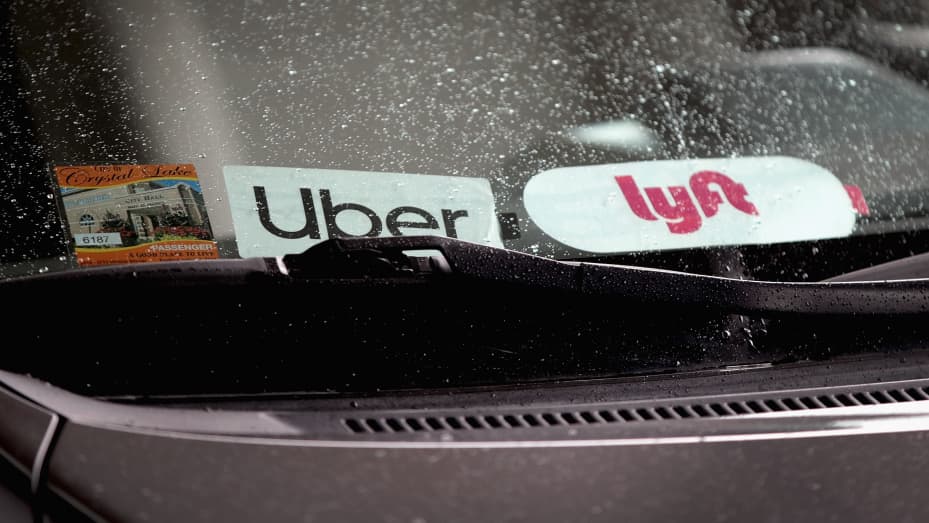
CNBC가 전한 소식이다.
작년 코로나로 인해 여행이 급격히 감소했으나, 현재 백신 도입 등으로 사람들은 다시 여행을 준비하고 있다. 하지만 승차 공유 대기업인 우버(Uber)와 리프트(Lyft)의 상황은 좋지 않다. 운전자에게 현금 인센티브를 제공하는 등 지원을 하고 있으나 운전자가 늘어나지 않아 고객 대기 시간이 길어지고 가격이 급등하고 있다.
우버와 리프트는 수백만 달러를 운전자 유치를 위해 투입하고 있으나 일부 전직 운전자는 지원책 검토나 가격 인상 시도 등의 행동조차 하지 않고 있다.
전직 승차공유 운전자는 다양한 이유로 운전을 재개하지 않고 있다.
가장 많은 이유로는 코로나 19 유행병에 대한 두려움이 이야기되고 있다. 미국 내 질병 통제 및 예방센터의 데이터에 따르면 현재 미국 인구의 50% 이상이 코로나 19에 대한 예방 접종을 받지 못했다.
텍사스 거주자이자 이전 차량 공유 운전자인 Louis Wu씨는 “코로나 19는 아직 종식되지 않았다. 사람들은 여전히 전염 위험에 노출되어있다.”고 말했다. 우버는 예방 접종이 완료될 경우 운전자의 80%가 다시 일을 재개할 계획이 있다고 밝혔다. 또한 당사는 사람들이 다시 일을 재개할 수 있도록 하기위한 노력의 일환으로 7월 초까지 백신 장소로 이동의 경우 돈을 받지 않는 등 백신 접종에 많은 자원을 투자했다.
전직 승차공유 운전자 중 일부는 식료품 배달업 종사자로 전환했다. The Ridshare Guy 블로그를 운영하는 Harry Campbell은 이메일을 통해 “코로나 시대에는 음식 배달에 대한 고객 상호 작용이 뒷좌석에 승객을 수송하는 것보다 훨씬 적습니다.”라고 말했다. “또한 주마다 1,000마일 이상을 이동하는 정규직 승합차 운전자에 비해 가까운 식당에서 주문한 것만을 배송하기 때문에 배달 기사로서 차에 마일리지도 적게 붙일 수 있습니다. 많은 운전자들이 사람들을 상대하는 것에 어려움을 느낍니다.”라고 덧붙였다.
일부 운전자는 올해 말 만료 예정인 실업 수당을 받고 있다. 해당 운전자의 경우 실업 수당 지급이 가을부터 단계적으로 중단되면 운전자로 복직하는 것을 예상할 수 있다.
캠벨 블로그 작성자이자 운전기사인 Chris Gerace는 “운전자들이 실업수당으로 현재의 삶을 유지중이라면 9월이 근로 재시작의 가장 큰 신호가 될 것”이라고 말했다.
After a dramatic decline in traveling this past year, people are moving again. Yet, despite offering cash incentives, rideshare giants Uber and Lyft are still struggling to bring drivers back to full speed, leading to longer wait times for customers and soaring prices.
Uber and Lyft have put millions into these efforts, but some former drivers aren’t even looking at these stimulus packages or trying to get in on surge pricing. A large percentage who are still holding out.
“Drivers are in a low-key strike,” Nicole Moore, a volunteer organizer with Rideshare Drivers United, told CNBC.
“Right now it’s a mini debacle for Uber and Lyft in terms of driver shortages and surge pricing throughout the US,” Wedbush’s Dan Ives said in an email. “Drivers are ~40% below capacity.”
Former ride-sharing drivers are staying off the road for a variety of reasons.
For many it’s fear of the continued pandemic, which is what made them stop driving in the first place. Currently, less than 50% of the U.S. population is fully vaccinated against Covid-19, according to data from the Centers for Disease Control and Prevention.
“This thing is not over yet, people can still get sick,” Louis Wu, a Texas resident and former rideshare driver, told CNBC. According to Uber, 80% of drivers planned to come back once vaccinated. The company has also heavily invested resources into getting people vaccinated, offering free rides to vaccine spots through early July, as a part of its effort to get people back on the road.
Others, wanting to stay in the gig economy but fearful of transmission, have switched to food or grocery delivery. That’s also allowed them to put less wear-and-tear on their cars, especially as gas prices and car parts prices increase.
“In times of Covid, there’s a lot less customer interaction with food delivery vs transporting a passenger in your backseat,” Harry Campbell, who runs The Rideshare Guy blog, said in an email. “You also put less miles on your car as a delivery driver since people order from nearby restaurants vs a full-time ride-hail driver that can easily do 1,000 miles per week or more. A lot of ride-hail drivers just get tired of dealing with people too.”
Some drivers have also remained on unemployment benefits, which are set to expire later this year. For those former drivers, they may be coaxed back into offering services once extended benefits phase out in the fall.
“September will be the big tell tale sign if drivers were holding out because of unemployment,” said Chris Gerace, a driver and contributor to Campbell’s blog.
![]()



![[외신] Lyft, 새 CEO 발표… 공동창업자, 경영직에서 물러날 것이라고 밝힘](https://mobiinsidecontent.s3.ap-northeast-2.amazonaws.com/kr/wp-content/uploads/2023/03/28120654/167462_130045_259-1-218x150.png)
![[외신] 우버, 공항 승차 예약 기능 추가한다](https://mobiinsidecontent.s3.ap-northeast-2.amazonaws.com/kr/wp-content/uploads/2021/10/07201815/1632698241762-218x150.jpg)
![[700인의 대표 이야기] 스웨터 공장과 지하철 역사를 공유 오피스로, 스파크플러스 이준섭 부대표를 만나다!](https://mobiinsidecontent.s3.ap-northeast-2.amazonaws.com/kr/wp-content/uploads/2021/10/01172600/210929_matt-%E1%84%8B%E1%85%B5%E1%86%AB%E1%84%90%E1%85%A5%E1%84%87%E1%85%B2_2-218x150.png)